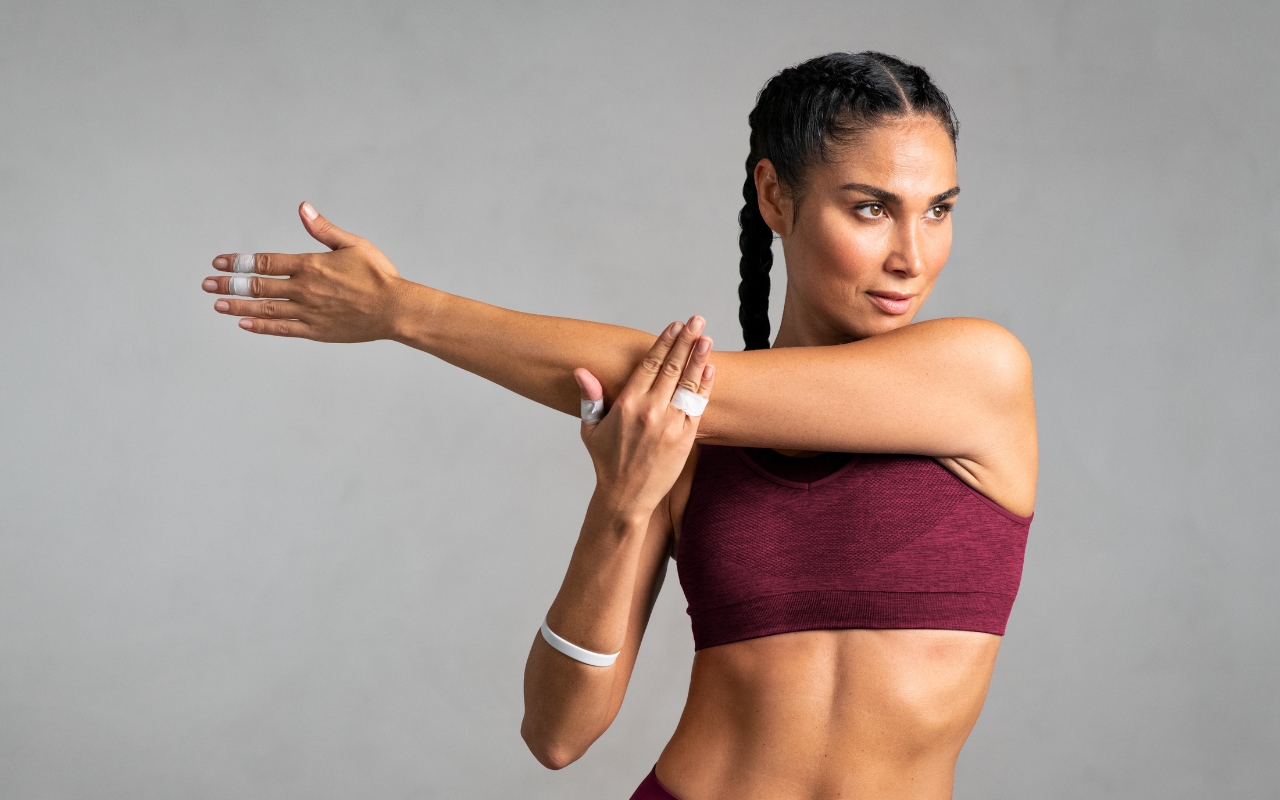Warming up is an often overlooked but essential component of any workout routine. Its significance cannot be overstated; a well-executed warm-up prepares the body for physical activity, reduces the risk of injuries, and enhances overall performance. Contrary to the tendency to skip this vital step, dedicating a few minutes to warm up can substantially affect your exercise outcomes. In this article, we delve into the importance of warm-up exercises and their physiological benefits and outline some of the best warm-up techniques recommended by fitness experts.
The Importance of Warming Up
Warming up serves multiple purposes that collectively contribute to a safer and more effective workout. Primarily, it increases blood flow to the muscles, which helps improve the delivery of oxygen and nutrients that muscles need during exercise. This process enhances muscle efficiency and primes the cardiovascular system to meet the demands of the upcoming physical activity.
Beyond the physiological benefits, warming up also psychologically prepares individuals for exercise. Engaging in a warm-up routine can help transition the mind into a state of focus and readiness, which is particularly crucial for high-intensity workouts or complex movements requiring concentration and coordination.
Moreover, research has shown that a proper warm-up can improve performance by enhancing muscle strength and power. When warmed up, muscles become more pliable, reducing the risk of strains and sprains. Additionally, warm-up exercises can help improve the joint range of motion, critical for performing exercises with proper form and technique.
Physiological Benefits of Warm-Up Exercises
Enhanced Blood Flow and Oxygenation
One of the primary goals of warming up is to raise the body temperature, which facilitates increased blood flow to the working muscles. This process, known as vasodilation, involves widening blood vessels, allowing more blood to flow through. As blood flow increases, so does the delivery of oxygen and essential nutrients to the muscles, which are necessary for energy production during exercise. According to Mayo Clinic, this circulation improvement helps prevent muscle fatigue and enhances overall endurance.
Improved Muscle Function and Flexibility
Warming up also activates the muscles and connective tissues, making them more elastic and less prone to injuries. Dynamic stretches, which involve moving muscles through their full range of motion, are particularly effective. These movements increase muscle temperature, elasticity, and flexibility, which reduces the likelihood of strains and sprains. Fitness experts from Women’s Health emphasize that dynamic stretches like arm swings, hip rotations, and lateral lunges are excellent warm-up exercises that prepare the body for more intense physical activity.
Joint Lubrication and Mobility
When muscles and joints are cold, they are more rigid and susceptible to injury. Warming up helps to lubricate the joints by increasing the production of synovial fluid, a viscous substance that reduces friction between the articular cartilage of synovial joints during movement. This lubrication is essential for maintaining joint health and preventing tendonitis and bursitis. Exercises like knee lifts and plank walkouts, which involve a full range of motion, help to improve joint mobility and stability, setting the stage for more complex movements during the workout.
Neuromuscular Activation
A well-structured warm-up routine enhances neuromuscular efficiency by activating the connection between the nervous system and the muscles. This activation is crucial for improving coordination, balance, and reaction times during exercise. Engaging in movements that mimic the exercises to be performed during the main workout can help prime the neuromuscular pathways, leading to more effective and precise movements. For example, lateral lunges to balance and jumping jacks are excellent exercises that engage multiple muscle groups and enhance neuromuscular coordination.
Comprehensive Warm-Up Exercises
Arm Swings
Arm swings are a simple yet effective warm-up exercise that targets the arms, chest, and back. To perform this exercise, stand with your feet slightly wider than hip-width apart and lift your arms to shoulder height. Swing your arms to cross in front of your chest, then immediately swing them back as far as you can. Continue this movement for 30 to 60 seconds. Arm swings help increase blood flow and flexibility in the upper body, making them an excellent choice for preparing for upper-body workouts.
Side Reach
Side reaches are ideal for warming up before a cardio routine. This exercise involves standing with your feet wider than hip-width apart, leaning to one side, and stretching the opposite arm diagonally toward the sky. Repeat on the other side and continue for 30 to 60 seconds. Side reaches help prepare the heart for the upcoming workout and reduce cardiovascular strain, making them an excellent choice for activities like running or jumping rope.
Hip Rotations
Hip rotations are particularly beneficial before engaging in lower-body workouts. Start by standing with your feet wider than hip-width apart, placing your hands behind your head. Lift one leg, bend the knee, and circle it across your body towards your chest, then back down to the starting position. Repeat on the other side and continue for 30 to 60 seconds. Hip rotations help warm the hip joints, improving flexibility and reducing the risk of injuries during squats and lunges.
Knee Lifts
Knee lifts are great for engaging the core and warming up the lower back and hips. Stand with your feet wider than hip-width apart, bend your arms, and place your hands behind your head. Lift one leg towards your body, bending the knee as if trying to touch your rib cage. Continue for 30 to 60 seconds. Knee lifts activate the core muscles, essential for maintaining stability and balance during various exercises.
Lateral Lunge to Balance
This exercise focuses on balance and coordination while activating the core. Stand with your feet hip-width apart to perform lateral lunges and take a big step to the right. Push your hips back, bend your right knee, and lower your body until the knee is bent at a 90-degree angle. Push back to an upright position and lift your knee towards your chest. Continue for 30 to 60 seconds on each side. Lateral lunges to balance help to improve stability and coordination, making them an excellent warm-up exercise for any workout routine.
Lateral Lunge with Reach
Adding a reach to lateral lunges facilitates greater glute activation and core stability. Stand with your feet wider than shoulder-width apart, and reach down towards your foot with one hand while lowering your body until the opposite knee is bent at a 90-degree angle. Repeat on the other side and continue for 30 to 60 seconds. This exercise warms up the lower body, engages the core, and improves flexibility.
Plie Squat with Heel Raise
Plie squats with heel raises are particularly effective for warming up the larger muscle groups in the lower body, such as the glutes and quads. Stand with your heels wider than shoulder-width apart and turn your toes out slightly. Bend your knees, push your hips back, and lower into a squat. As you stand up, lift your heels and reach your arms upwards. Continue for 30 to 60 seconds. This exercise raises body temperature and makes oxygen more available to the muscles, enhancing cardio and strength training performance.
Squat with Reach
Squats with reach are excellent for working on a range of motion and preparing for exercises like weighted squats. Stand with your heels wider than shoulder-width apart, and turn your toes out slightly. Bend your knees, push your hips back, and lower into a squat. As you stand up, lift your arms straight upward. Continue for 30 to 60 seconds. This exercise helps to improve flexibility and muscle activation in the lower body.
Plank Walk Out
Plank walkouts are a full-body warm-up exercise that requires coordination and stability. Start standing and bend down until your hands touch the ground. Walk your hands forward until you reach a plank position, pause for a second, then walk your hands back towards your feet and return to standing. Continue for 30 to 60 seconds. Plank walkouts engage the glutes, hamstrings, quads, and core, making them an excellent warm-up exercise for any workout routine.
Jumping Jacks
Jumping jacks are a classic warm-up exercise that gets the whole body moving. Stand with your feet hip-distance apart and your arms at your sides. Simultaneously, raise your arms to the sides and jump your feet outwards. Return to the starting position and repeat for 30 to 60 seconds. Jumping jacks are great for pumping the heart and increasing oxygen flow, making them an ideal pre-cardio warm-up exercise.
Incorporating Warm-Up Exercises into Your Routine
The ideal warm-up routine should be tailored to the specific demands of your workout. For instance, if your workout involves running, focus on exercises that target the lower body and cardiovascular system, such as side reaches, hip rotations, and knee lifts. Conversely, exercises like arm swings and plank walkouts if your workout involves upper body strength training.
It is also important to remember that the duration of your warm-up should be proportionate to the intensity of your workout. Generally, a 5 to 10-minute warm-up suffices for most workouts. However, a longer warm-up may be necessary for high-intensity or endurance activities to adequately prepare the body.
Conclusion
In conclusion, warming up is an essential component of any workout routine that should not be overlooked. The physiological benefits of warming up include increased blood flow and oxygenation, improved muscle function and flexibility, enhanced joint lubrication and mobility, and better neuromuscular activation. Incorporating a variety of warm-up exercises, such as arm swings, side reaches, hip rotations, knee lifts, lateral lunges, plie squats, squats with reach, plank walkouts, and jumping jacks, can help prepare the body for the demands of physical activity, reduce the risk of injuries, and enhance overall performance. You can set the stage for a more effective and enjoyable workout by dedicating a few minutes to warming up.










